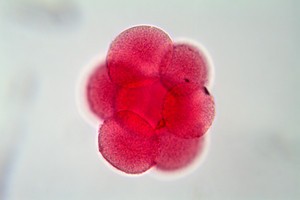 Science has made several breakthroughs to help infertile women conceive babies. Some of these methods include surgeries, donor eggs/embryos, IVF’s, fertility drugs etc. However, in the most recent discoveries and experiments, scientists are trying to incorporate a 3D printer. The functions of 3D printers have grown exponentially and have been aiding medical advances for a while, especially in areas of artificial limbs. They may now help advance areas of fertility.
Science has made several breakthroughs to help infertile women conceive babies. Some of these methods include surgeries, donor eggs/embryos, IVF’s, fertility drugs etc. However, in the most recent discoveries and experiments, scientists are trying to incorporate a 3D printer. The functions of 3D printers have grown exponentially and have been aiding medical advances for a while, especially in areas of artificial limbs. They may now help advance areas of fertility.
A recent experiment held at Northwestern University made use of a 3D printer to build a well functioning ovary. The scientists at the university happened upon a major breakthrough when these ovaries did not only restore ovarian functions, but also enabled natural birth in mice. The procedure involved the creation of an ovary serving three main purposes. The ability to release and nurture immature egg cells, a malleable but strong structure/surface to support the growth of both the egg cells and hormone-releasing cells. The ovary was made from gelatin and was not an exact replica of ovaries found in mice. Scientists used the basic structure and modified it’s shape to serve the best results. Ovarian follicles and other cell tissues were later added to the structure. These artificially built ovaries were now implanted into mice with previously extracted ovaries. After some tries, scientists got the ovaries to function normally and found that the hormonal cycle was restored in the mice. Not expecting it at all, the scientists now discovered that the mice were able to give birth and could also provide for their newborns . The gelatin structure had allowed for blood vessels to integrate within them and allowed for the eggs to grow naturally. This particular breakthrough has shown scientists new hope for infertile women. They believe that not only can this new method enable infertile women to conceive, but it can also increase the lifespan of the eggs. Meaning, that women will be able to conceive until later years of their lives.
blood vessels to integrate within them and allowed for the eggs to grow naturally. This particular breakthrough has shown scientists new hope for infertile women. They believe that not only can this new method enable infertile women to conceive, but it can also increase the lifespan of the eggs. Meaning, that women will be able to conceive until later years of their lives.
However, the method still needs to be perfected. Reasons for infertility in women are varying, and so this one method may not be applicable to all women. It may also be hard to restore ovaries in older women since their eggs and other ovarian structures begin to decay with time. In one of my earlier blogs, I mentioned the use of stem cells. In that blog, these cells were being used to cure brain damage. In this case, scientists believe that the use of stem cells can rebuild damage in the ovaries. This would be a crucial step in the process since ovaries and eggs begin getting damaged over time, and are largely limited.
In conclusion, Dr. Monica Laronda, the head researcher in this study believes that there is bright future in the area of fertility seeing this new development. However, it is a long way out since very limited experiments have been conducted, and have only been conducted on mice.
Citations:
Image 1 (3D print of an ultrasound)
- @SingularityHub. “New 3D Printed Ovaries Allow Infertile Mice to Give Birth.”Singularity HUB. N.p., 03 June 2016. Web. 21 Oct. 2016.
- Ding, ByKarisa. “Fertility Treatment: Your Options at a Glance | BabyCenter.”BabyCenter. N.p., 22 Sept. 2016. Web. 21 Oct. 2016.
- “Ovarian Follicle.” Wikipedia. Wikimedia Foundation, n.d. Web. 21 Oct. 2016.

Wow, this is so interesting! My brother and his wife struggled to conceive for several years and it was very hard for them to deal with. Eventually they got pregnant through IVF and had twins! Unfortunately though, IVF does not work for everyone, including my friend’s sister, who has tried it several times and has had no luck. If scientists can perfect these ovaries they are creating, maybe they can solve the issue that IVF can’t make up for. If so, considering the many women struggling with infertility problems, we may just have a baby boom coming our way!